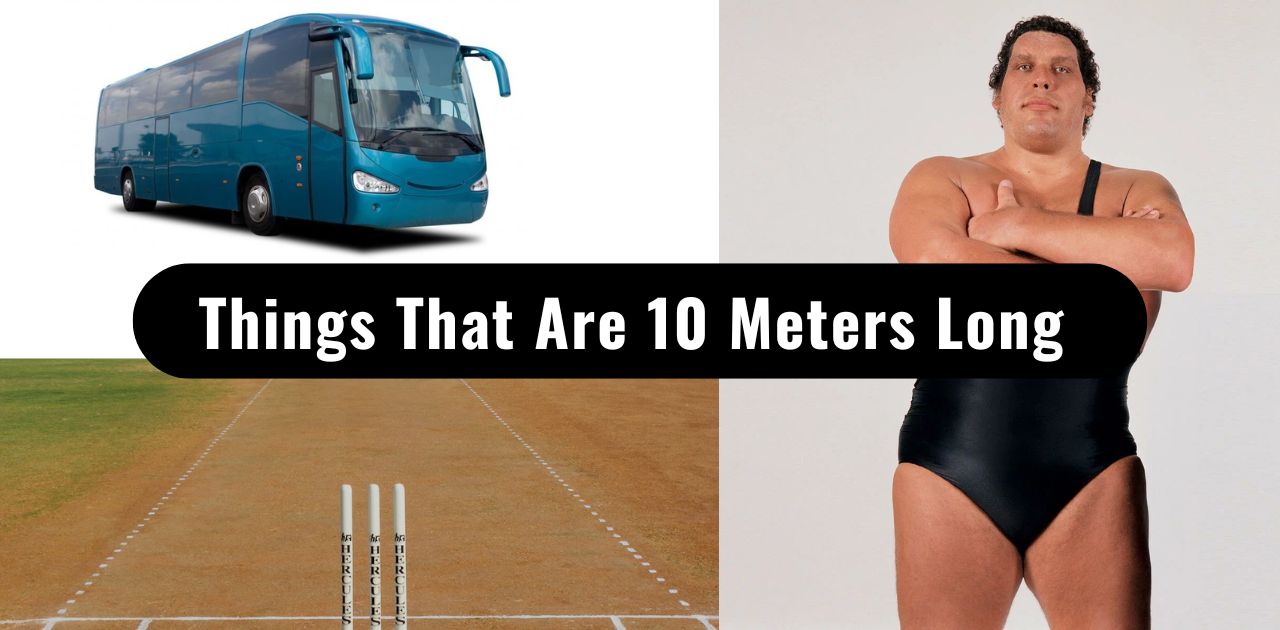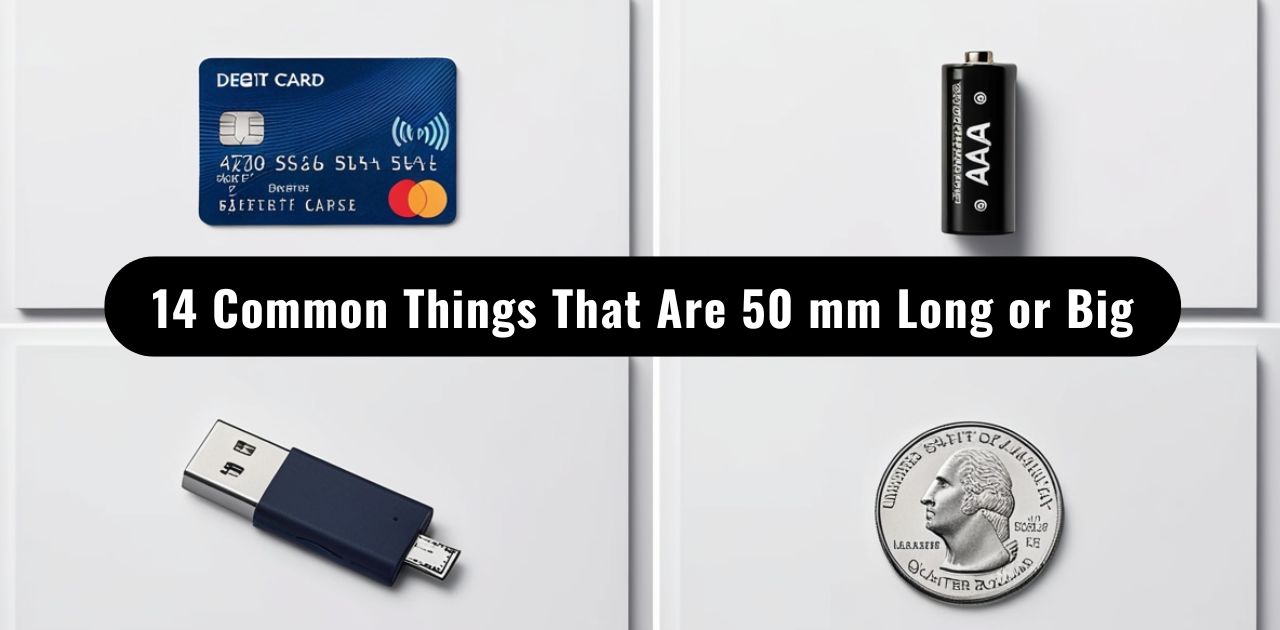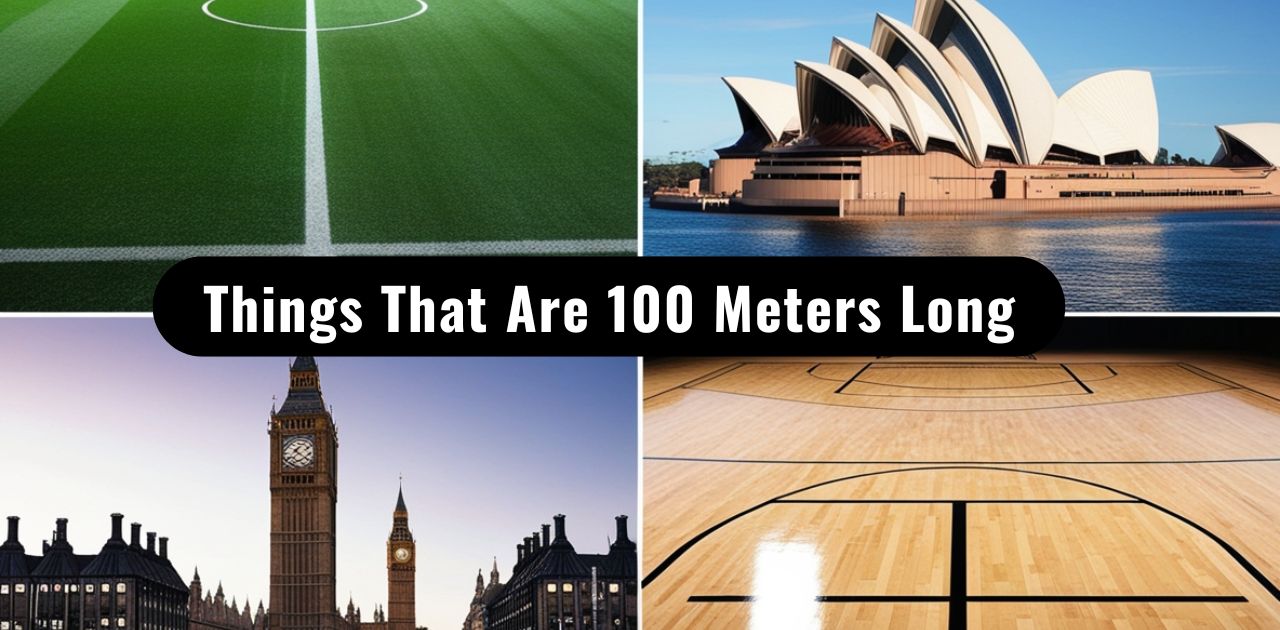Understanding measurements isn’t just about numbers it’s about connecting abstract concepts to the tangible world around us. Imagine having a superpower that lets you estimate lengths instantly, without pulling out a measuring tape.
That’s the magic of understanding what one meter looks like in everyday objects. Whether you’re a DIY enthusiast, a professional designer, or simply curious about spatial dimensions, this guide will transform how you perceive length and measurement.
What is a Meter?
The meter isn’t just a random unit of measurement it’s a globally recognized standard that bridges scientific precision with practical understanding.
Defined as the fundamental unit of length in the International System of Units (SI), one meter represents approximately 39.4 inches or 3.28 feet. Its origin traces back to the late 18th century, when French scientists sought to create a universal measurement system based on natural constants.
Initially, the meter was defined as one ten-millionth of the distance from the Earth’s equator to the North Pole. Today, it’s precisely defined using the speed of light a testament to humanity’s relentless pursuit of accuracy. This scientific marvel transforms from an abstract concept to a practical tool we can visualize through everyday objects.
How Long is 1 Meter?
To truly grasp a meter’s length, let’s break it down into relatable terms. One meter equals:
- 100 centimeters
- 1,000 millimeters
- 39.37 inches
- 3.28 feet
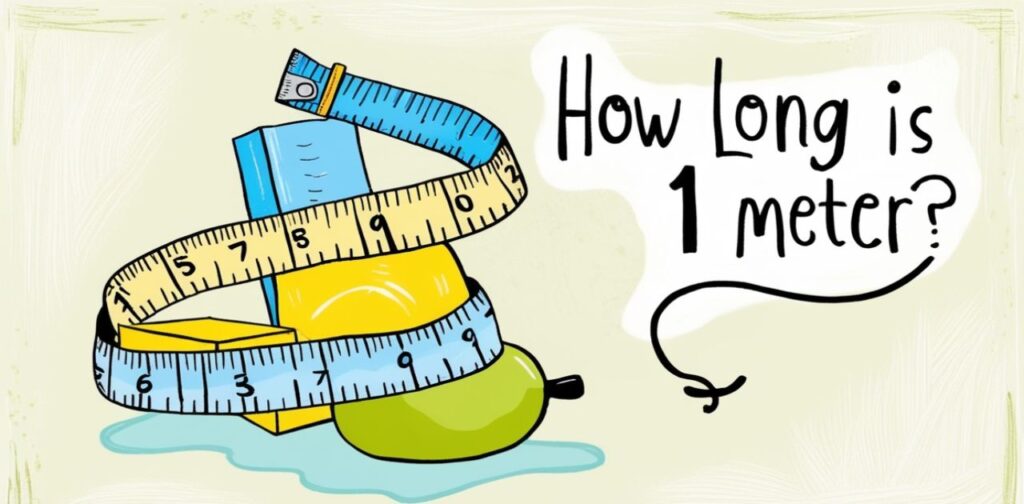
These conversions might seem technical, but they become intuitive when you start associating meters with familiar objects. Think of it like learning a new language once you understand the basic translations, the whole world opens up.
How Big Is 1 Meter in the Human Body?
Our bodies serve as incredible measurement tools. For an average adult, one meter roughly corresponds to the distance from your toe to your waist. This natural measurement technique demonstrates how we’re inherently equipped with estimation skills.
Consider how different body types might perceive a meter slightly differently. A basketball player might see a meter as a shorter distance compared to someone of smaller stature. This variability highlights the beauty of measurement it’s both scientific and wonderfully personal.
Common Things That Are 1 Meter Long
- Guitar
- Cricket Bat
- Yoga Mats
- Whiteboard
- Golf Clubs
- Doorknob Height
- A Refrigerator’s Width
- A large Adult Step
- Basketball Hoop
- Katana Sword
- Ice Hockey Stick
- Height of a Kitchen Counter
- Labrador Retriever
- A Walking Cane
1. Guitar

The guitar emerges as a fascinating meter-length reference that resonates across cultures and musical traditions. A standard acoustic guitar measures almost precisely one meter, making it an exceptional visualization aid for length estimation. Musicians and non-musicians alike can appreciate this natural measuring tool that transforms abstract measurement into a tangible experience.
When considering a guitar’s length, we’re not just talking about a musical instrument but a sophisticated measurement reference. The careful craftsmanship that goes into creating a guitar ensures remarkable consistency in its dimensions. From the headstock to the body’s end, guitarists intuitively understand a length that spans approximately one meter, bridging musical artistry with precise engineering.
Professional musicians and instrument makers recognize that a guitar’s length isn’t just about aesthetics but about balance, proportion, and acoustic performance. This one-meter dimension represents a harmonious intersection between mathematical precision and creative expression, offering more than just a measurement it provides a cultural and artistic reference point.
2. Cricket Bat
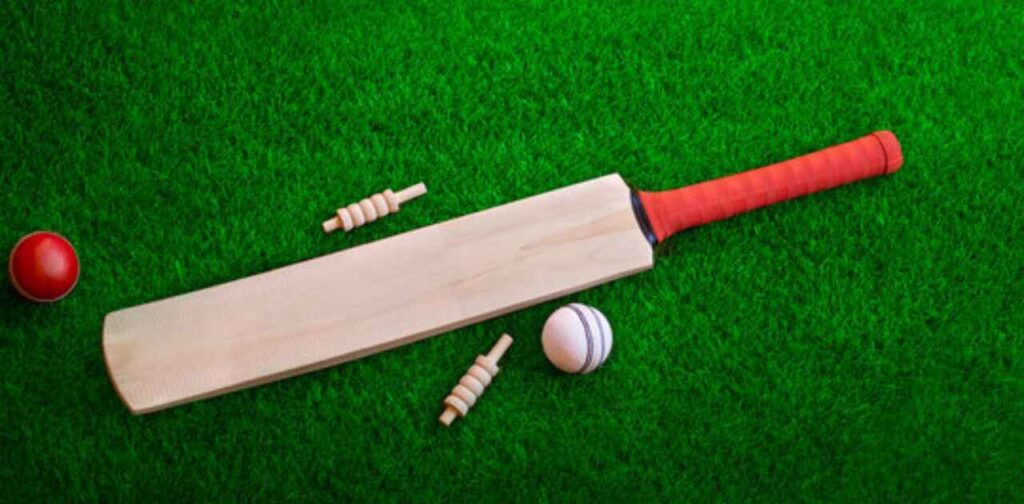
Cricket bats represent another remarkable example of a near-meter-long object that transcends mere sporting equipment. Typically measuring around 96.5 centimeters, these bats embody precision engineering within athletic equipment. The standardization of cricket bat dimensions reflects the sport’s commitment to uniformity and performance.
In cricket-playing nations like India, England, Australia, and the West Indies, the bat serves as more than just a tool it’s a symbol of athletic excellence. The careful balance between length, weight, and material composition makes the cricket bat an extraordinary measurement reference. Professional cricketers understand that every centimeter matters, transforming the bat into a scientifically calibrated instrument of competition.
Cultural significance intertwines with measurement precision in these sporting artifacts. A cricket bat’s length represents generations of sporting tradition, engineering innovation, and athletic aspiration. By understanding its dimensions, we gain insight into how standardized measurements integrate seamlessly with human performance and technological advancement.
Read Also >> Everyday Items That Are 5 Meters Long or Big
3. Yoga Mats
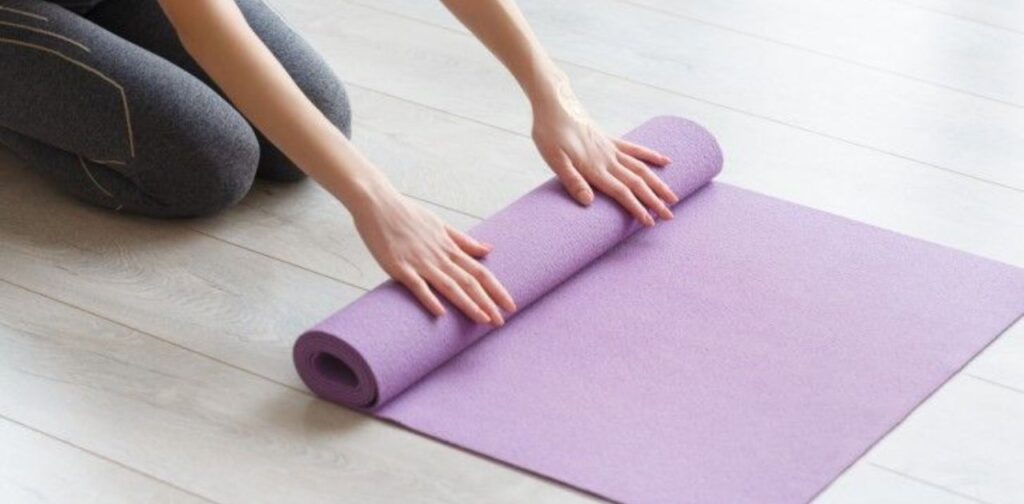
Yoga mats offer a fascinating perspective on measurement that extends beyond physical dimensions. Typically spanning approximately one meter in width, these fitness tools provide practitioners with a personal space for physical and mental exploration. The standard yoga mat becomes more than just exercise equipment it transforms into a visualization aid for understanding spatial relationships.
In the wellness industry, a yoga mat represents personal growth, physical alignment, and mindful practice. Its consistent dimensions create a reliable reference point for movement, balance, and spatial awareness. Practitioners unconsciously use their mat as a measurement guide, understanding body positioning and movement with remarkable intuition.
The one-meter dimension of yoga mats demonstrates how measurement transcends pure mathematical calculation. It becomes a tool for personal development, a boundary for physical practice, and a canvas for individual expression. Health enthusiasts and fitness professionals recognize that these mats are not just accessories but sophisticated instruments of personal transformation.
4. Whiteboard
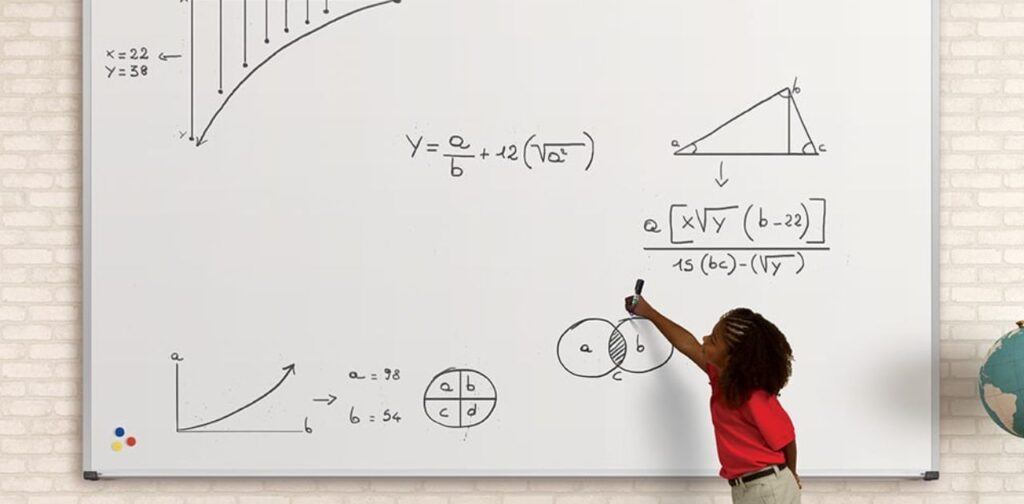
Whiteboards stand as powerful communication tools that embody measurement precision in professional and educational environments. A medium-sized whiteboard measuring approximately one meter tall serves as an intellectual canvas, facilitating knowledge transfer and collaborative thinking.
In classrooms, conference rooms, and creative spaces, whiteboards represent more than writing surfaces they are platforms for innovation, learning, and collective problem-solving. Their standardized dimensions ensure visibility, readability, and effective communication across diverse settings. Educators and professionals leverage these one-meter canvases to break down complex ideas, map strategies, and visualize intricate concepts.
The whiteboard’s one-meter height represents a carefully considered ergonomic design that accommodates human interaction and visual comprehension. Its dimensions reflect sophisticated understanding of spatial dynamics, learning psychology, and communication efficiency.
5. Golf Clubs

Golf clubs offer a precise measurement reference deeply rooted in athletic precision. Professional golf equipment typically ranges between 42 to 45 inches in length, making drivers a near-perfect approximation of one meter. This careful engineering ensures that golf clubs provide players with optimal performance and consistent mechanical advantage during play.
The design of golf clubs reflects a sophisticated blend of scientific measurement and athletic requirements. Equipment manufacturers meticulously standardize club lengths to create balanced tools that enhance player performance. These measurement standards demonstrate how precision engineering transforms sporting equipment into remarkable visualization aids for understanding length and dimensional relationships.
6. Doorknob Height
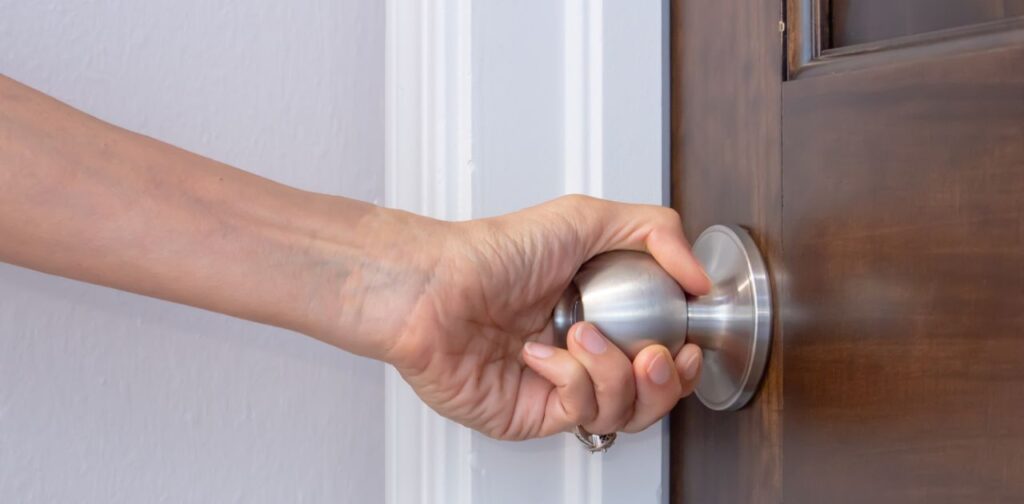
Doorknob placement represents a fascinating example of standardized architectural measurement that provides an intuitive length reference. Typically positioned between 0.9 and 1.1 meters from the floor, doorknobs offer a consistent benchmark for spatial understanding in architectural design and home construction. This seemingly mundane element becomes a powerful tool for visualizing vertical measurements.
Ergonomic design principles drive the standardization of doorknob height, balancing human physiological factors with practical functionality. Architects and builders carefully consider average human reach, accessibility requirements, and comfort when determining these precise placement guidelines. The doorknob’s height becomes more than a functional element it transforms into a sophisticated measurement reference that reflects thoughtful design considerations.
7. A Refrigerator’s Width

Refrigerators serve as unexpected yet remarkably accurate measurement references in home settings. Most standard models span between 70 to 90 centimeters wide, providing a quick mental benchmark for estimating near-meter measurements. This household appliance becomes an intuitive visualization tool for understanding spatial dimensions in everyday environments.
The refrigerator’s consistent dimensions reflect careful engineering and standardized manufacturing practices. Home designers and kitchen planners rely on these precise measurements to create functional living spaces. By understanding a refrigerator’s width, individuals gain an innate ability to estimate and visualize lengths without specialized measuring tools.
Read Also >> Things That Are 10 Meters Long or Big
8. A Large Adult Step

Human locomotion offers a fascinating cultural approach to measurement that transcends technological tools. An average adult’s large stride typically covers approximately one meter, demonstrating how body mechanics can serve as a natural measurement system. This intuitive method connects physical movement with spatial understanding in a profoundly human way.
Different cultures have long used walking measurements as traditional estimation techniques. From African land measurement practices to indigenous navigation methods, the human step represents a dynamic and adaptable measurement approach. This biological measurement system reveals how humans inherently understand spatial relationships through personal physical experience.
9. Basketball Hoop

Basketball equipment provides a dynamic visualization of measurement precision within competitive sports. Two standard basketball hoops placed side by side nearly reach one meter in combined diameter, offering a playful and engaging way to understand length. This sporting context transforms abstract measurement into an interactive learning experience.
The standardization of basketball equipment reflects rigorous athletic design principles. Hoop dimensions are carefully calculated to create consistent competitive environments, ensuring fair play and precise performance metrics. By understanding these measurements, sports enthusiasts gain insight into the intricate engineering behind athletic infrastructure.
10. Katana Sword

The katana represents a remarkable intersection of cultural heritage and precise measurement. Traditionally measuring close to one meter in total length, this Japanese sword embodies centuries of martial arts craftsmanship. The blade typically spans around 70 centimeters, with the remaining length dedicated to the intricate handle, reflecting a meticulous approach to design and functionality.
Beyond its physical dimensions, the katana symbolizes historical precision and artistic excellence. Samurai warriors considered these swords not merely as weapons but as extensions of their spirit, with each measurement carefully calculated to achieve perfect balance and performance. This approach demonstrates how measurement transcends mere numerical calculation, becoming a profound expression of cultural and martial expertise.
11. Ice Hockey Stick

Ice hockey sticks exemplify the pinnacle of athletic equipment engineering, measuring approximately one meter in length. These precision-crafted tools are designed to meet rigorous competitive standards, balancing performance requirements with athletes’ individual physical characteristics. The careful calibration of length ensures optimal control, speed, and maneuverability on the ice.
Professional hockey equipment manufacturers invest extensive research into developing sticks that maximize player performance. Each centimeter matters in competitive sports, transforming the hockey stick from a simple piece of equipment into a sophisticated measurement tool that integrates athletic skill with scientific precision. The one-meter length becomes a standard that reflects the dynamic nature of professional athletics.
12. Height of a Kitchen Counter

Kitchen counters represent a critical element of ergonomic design, typically ranging between 0.9 to 1 meter in height. This standardized measurement ensures optimal comfort and functionality for food preparation, reflecting careful consideration of human body mechanics and practical kitchen design. The consistent height serves as a reliable reference point for home spatial planning.
Architects and kitchen designers meticulously calculate counter heights to create spaces that balance efficiency and user comfort. These measurements integrate scientific understanding of human physiology with practical home design principles, transforming the kitchen from a mere cooking space into a carefully engineered environment that supports human activities.
13. Labrador Retriever

Labrador Retrievers provide a fascinating biological measurement reference that connects animal anatomy with human dimensional understanding. While not precisely one meter in length, an adult Labrador typically measures close to this standard, offering an organic visualization of spatial dimensions. The breed’s consistent size makes it an intriguing natural measurement tool that bridges scientific observation with everyday perception.
Canine body measurements reveal fascinating insights into biological standardization. Professional breeders and veterinarians carefully track breed standards, with adult Labradors often ranging between 0.9 and 1.1 meters in length from nose to tail. This natural measurement demonstrates how living organisms can serve as intuitive references for understanding spatial relationships, transforming biological characteristics into practical estimation tools.
14. A Walking Cane
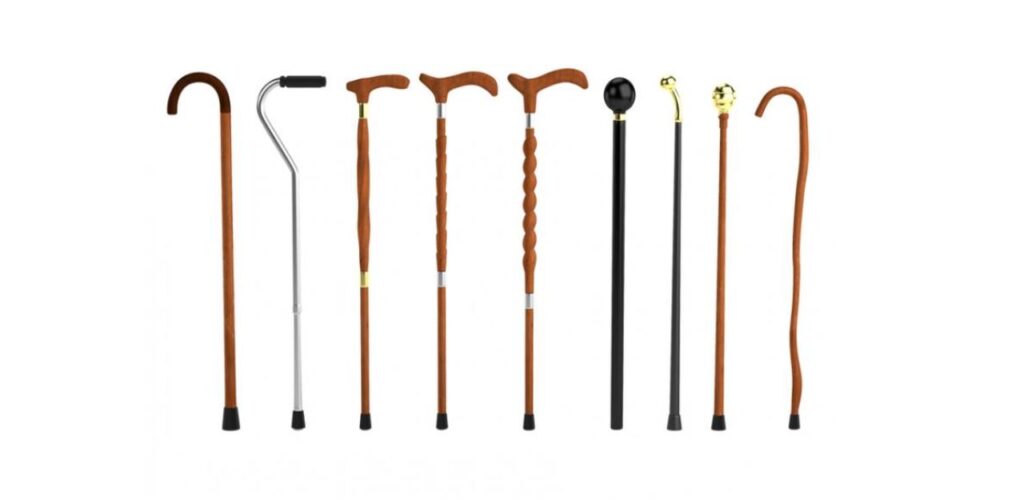
Walking canes represent a remarkable intersection of mobility assistance and measurement precision. Traditionally designed to provide support while maintaining ergonomic functionality, standard walking canes often measure remarkably close to one meter in length. This carefully calculated dimension ensures optimal user comfort and stability across diverse physical requirements.
The engineering behind walking canes reflects sophisticated understanding of human biomechanics and measurement standards. Manufacturers meticulously design these mobility tools to accommodate various user heights, body structures, and physical needs. By creating a near-meter-long support device, walking cane designers demonstrate how precise measurement can directly impact personal mobility and quality of life.
Conversion Quick Reference
Understanding meter conversions opens up a world of measurement flexibility. The fundamental conversions provide a clear framework for translating between different measurement systems, making spatial understanding more accessible. These precise translations bridge imperial and metric measurement approaches, offering practical tools for everyday calculations.
Conversion Table:
- 1 meter = 3.28 feet
- 1 meter = 39.37 inches
- 1 meter = 1,000 millimeters
- 1 meter = 100 centimeters
Read Also >> Things That Are 500 Meters Long or Big
Conclusion
Measurement is more than a scientific concept it’s a language that helps us understand and interact with the world around us. By connecting abstract numerical values to familiar objects, we transform complex measurement principles into intuitive, accessible knowledge. From musical instruments to sporting equipment, everyday items offer remarkable insights into dimensional understanding.
The ability to visualize and estimate measurements empowers individuals across various disciplines. Whether you’re a professional designer, an athlete, or simply curious about spatial relationships, understanding one meter provides a powerful tool for navigating physical spaces. These practical examples demonstrate that measurement is not just about numbers, but about connecting human experience with scientific precision.
FAQ’s
How long is 1 meter in feet?
A 1 meter equals 3.28 feet, providing a quick imperial measurement conversion for easy understanding.
How long is 1 meter visually?
A 1 meter can be visualized through common objects like a standard guitar, cricket bat, or large adult step, making abstract measurements tangible.
How long is 1 meter in human body?
A 1 meter approximately matches the distance from an average adult’s toe to waist, offering a natural body-based measurement reference.
Is 1 meter longer than 1 foot?
A Yes, 1 meter (39.4 inches) is significantly longer than 1 foot (12 inches), representing more than three times the length.
How many 12-inch segments are in 1 meter?
A 1 meter contains approximately 3.28 twelve-inch segments, demonstrating its substantial length compared to standard foot measurements.
How long is 1 meter in centimeters?
A 1 meter exactly equals 100 centimeters, providing a precise metric system measurement breakdown.
How long is 1 meter in millimeters?
A 1 meter converts to 1,000 millimeters, offering a granular understanding of length measurement.
Is 2 meters longer than 3 feet?
A Absolutely, 2 meters (approximately 6.56 feet) is significantly longer than 3 feet, demonstrating substantial length difference.


